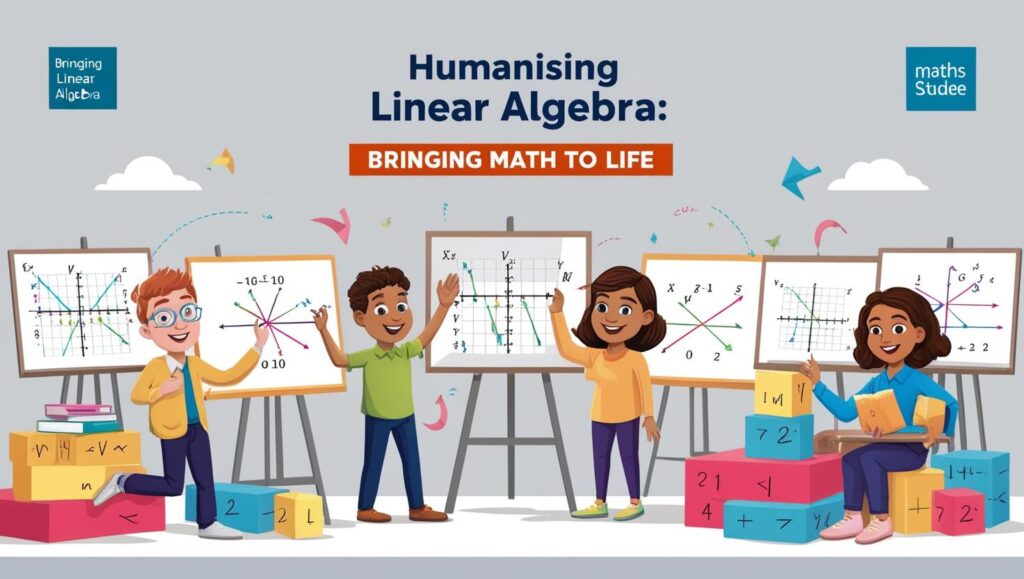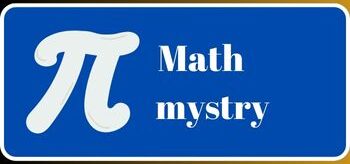Currently Empty: $0.00
Mathematics often feels abstract and intimidating, but at its core, it’s a language that describes patterns, relationships, and structures in the world around us. Linear algebra, in particular, is one of the most powerful and widely applicable branches of math—yet many students struggle to connect with it beyond formulas and computations.
Vectors: More Than Just Arrows
When you first encounter vectors, they’re often drawn as arrows pointing in space. But what do they represent?
- A vector is a way to describe direction and magnitude. Think of it like giving someone directions: “Walk 3 blocks east and 2 blocks north.” That’s a 2D vector!
- Vectors can represent real-world things:
- Forces in physics (push/pull)
- Data in machine learning (a list of features like height, weight, age)
- Positions in space (GPS coordinates)
Instead of memorizing abstract definitions, imagine vectors as movements, decisions, or attributes—suddenly, they feel much more tangible.
Matrices: Math’s Transformers
A matrix is merely a numerical grid, but transformation is where its true power resides.
- A matrix can be thought of as a device that modifies space.
- Input vectors, such as points on a graph, can be rotated, stretched, or flipped by the matrix.
- For instance, in computer graphics, 3D objects in video games are rotated by matrices.
- Systems of equations are also described by matrices.
- With matrices, you can manage several relationships at once rather than solving equations one at a time, such as resource optimization or budget balance.
- Seeing matrices as recipes is a fun way to visualize them, with each row representing an instruction that changes your input (vector) to generate an output.
Eigenvalues & Eigenvectors: The “Unchanged” Paths
Things get deep here, but they’re also lovely.
- A unique vector that remains unchanged when transformed by a matrix is called an eigenvector.
- It is only compressed or stretched by an eigenvalue-related factor.
- What is the significance of this?
- In physics, stable states (such as a bridge’s natural frequency) are described by eigenvectors.
- By identifying the most crucial data directions, they aid in machine learning by reducing dimensions (PCA).
- Consider eigenvectors to be the “pure modes” of a system, analogous to the inherent vibrations of a guitar string. Eigenvectors are patterns that naturally appear even when you pluck them at random.
Utilising Linear Algebra in Daily Life
You may not be aware of it, but linear algebra is used in many things:
- Computer Graphics: Matrix animation is used to render and move objects in all 3D animations, including Pixar films and video games.
- Search engines: To rank web pages, Google’s PageRank algorithm makes use of eigenvectors.
- Data science: Matrix operations are the foundation of machine learning models, such as neural networks.
- Engineering: Linear algebra is essential to structural analysis, robotics, and circuits.
- Linear algebra is used in the background of self-driving cars, Netflix recommendations, and even weather forecasts.
Final Thought: Math as a Story
The key to understanding linear algebra isn’t just memorizing formulas—it’s seeing the story behind them.
- Vectors are movements and choices.
- Matrices are transformations and systems.
- Eigenvectors are natural patterns.
When you approach math with curiosity and imagination, it stops being a chore and starts feeling like a toolkit for solving real-world puzzles.
So next time you see a matrix, don’t just think of numbers—think of the world it’s shaping.


